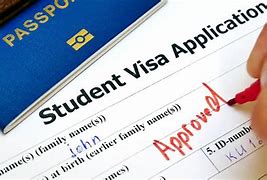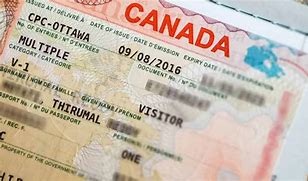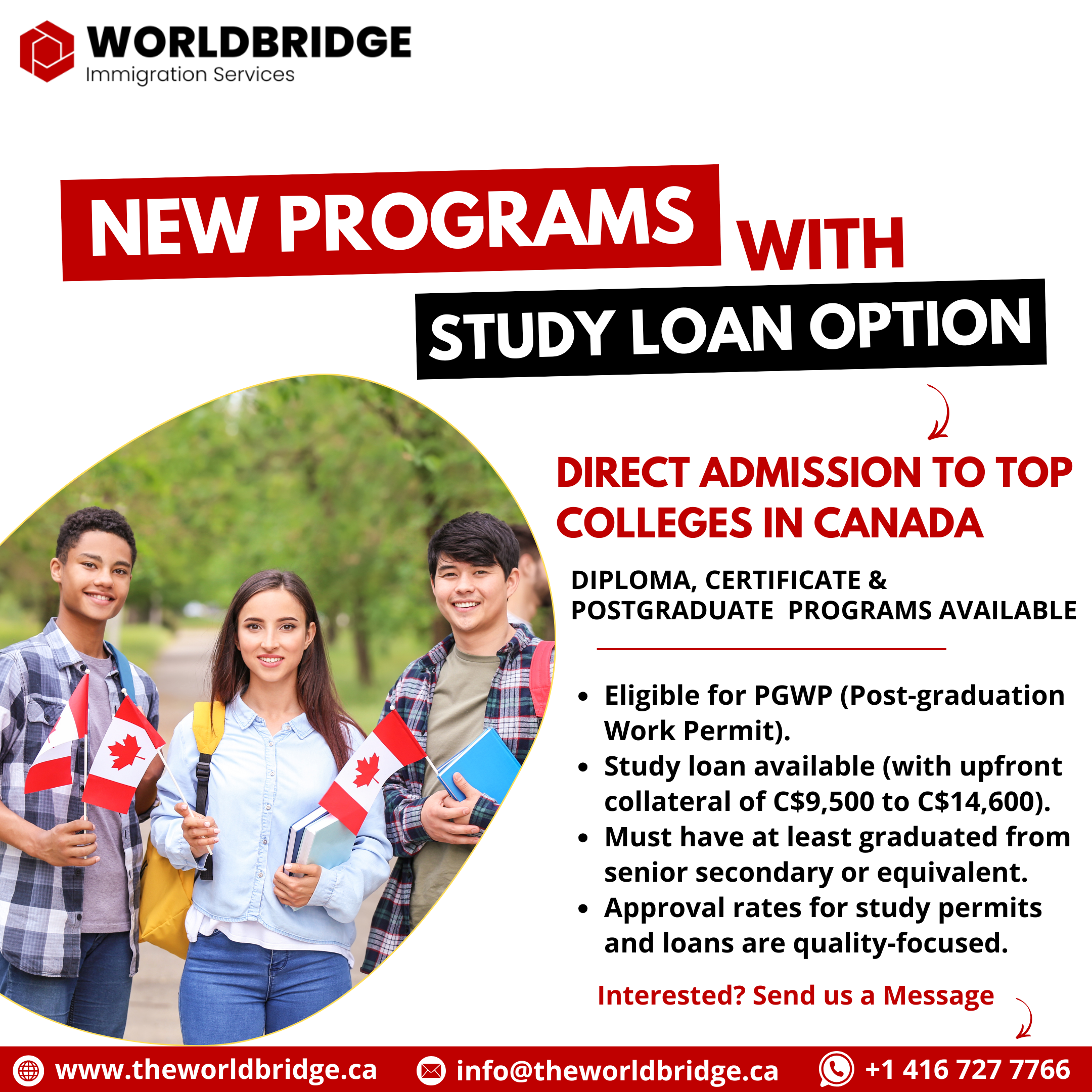Looking to relocate to Canada and become a permanent resident in 2024, there’s an incredible opportunity awaiting you. The Home Care Provider Pilot is a game-changer, offering a direct path to permanent residency without the need for studying or securing an LMIA job. Heres how you can make this happen in 8 simple steps: Read- An overview of some Immigration programs available in Canada 1. Select the Right Program The first step is to choose between the Home Child Care Provider Pilot and the Home Support Worker Pilot. This choice should be based on your education and experience and should align with the National Occupation Classification Code (NOC) relevant to each program. 2. Choose the Correct Category There are two categories for these pilot programs: – Gaining Experience Category: For those with less than 12 months of work experience as a caregiver in Canada. – Direct to Permanent Residence Category: For those with 12 months or more of work experience. 3. Secure a Genuine and Valid Job Offer A valid job offer is a prerequisite for your application. Ensure the job is: – Full-time (at least 30 hours per week). – From a Canadian employer outside Quebec. – Not from a business, embassy, high commission, or consulate. – Matching the NOC code for the pilot you are applying for. 4. Demonstrate Your Credibility and Ability You need to gather evidence of your experience in the specified NOC occupation: – Home Child Care Provider (NOC 44100): Care must be provided in a private home, not in institutional settings, and cannot include experience as a foster parent. – Home Support Worker (NOC 44101): Care must be provided in a private home, not in institutional settings. 5. Language Proficiency You must take a language test and achieve a minimum language level of CLB5 in English or NLCL5 in French across all four language skills (writing, reading, listening, and speaking). 6. Meet the Education Requirements A completed post-secondary education credential of at least one year is mandatory. If your education is from outside Canada, you need to undergo an assessment to prove its equivalence to a Canadian post-secondary education credential. 7. Admissibility to Canada Ensure you meet health and security standards to be eligible to enter and stay in Canada. 8. Choose Your Permanent Residence Location Plan to live outside the province of Quebec to meet the specific requirements for caregiver visa holders. Application Process 1. Submit Applications: When you have a valid job offer, submit both a work permit application and a permanent residence application, paying the required fees for both. 2. Work Permit: If you meet the requirements, you will receive a work permit to work temporarily in Canada. This occupation-restricted open work permit allows you to work as a caregiver for any employer. 3. Gaining Experience: After gaining at least 12 months of eligible work experience in Canada, send proof of your work experience to IRCC. They will make the final decision on your permanent residence application. Additional Information 1- Family Members: Your family members are eligible to come to Canada with you and can apply for work or study permits. 2- Program Caps: The pilot programs have caps, and applications will be accepted starting January 1, 2024, until the caps are reached. Be prepared to apply as soon as the portal opens. 3- Application Fees: $1085 for processing and right of residence, $155 for a work permit, and $155 for each dependent child. Check for additional costs like medical exams, police certificates, language tests, and education assessments. Make sure you are well-prepared and ready to apply as soon as the program opens to increase your chances of success Also Read- Navigating The Canadian ImmigrationTop 5 mistakes to avoid . Let Worldbridge Immigration Services be your guide to a successful future in Canada Contact us: Website: www.theworldbridge.ca Email: info@theworldbridge.ca Phone/WhatsApp: +1-416-727-7766 Social Media: @worldbridgeHQ
Five Keys to a Successful Letter of Explanation for a Canada Study Permit
A letter of explanation is like a well-tailored suit—when done correctly, it fits just right. Its neither too loose nor too tight, perfectly highlighting your reasons and intentions for studying in Canada. In this article, we will guide you through crafting an impeccable letter of explanation, drawing insights from a successful case. Our example is concise, about 250 words or one page, ensuring it captures the visa officer’s attention without overwhelming them. Key Number One: A Purposeful Introduction Your opening paragraph is akin to a headline. It should clearly convey who you are and how you will benefit from studying in Canada in just a sentence or two. For instance: “My name is Max, and I am [age] years old. My objective is to establish a robust restaurant scene in Ukraine. To achieve this, I would like to blend my prior international hospitality experience with the exceptional culinary education that Canada offers.” Here, the applicant highlights their purpose and the benefits they will gain from their education in Canada. Emphasizing a long-term goal, rather than just experiencing Canada, can make a significant impact. Avoid clichés and irrelevant details, and respect the visa officers time. Key Number Two: Validate Your Claims Demonstrate how you are already making strides toward your goal and show that you are committed to it. For example: “Since my home country is still developing, I see numerous opportunities here for myself and my family in the future. To secure this future and become a true leader in the restaurant industry, I have completed an extensive six-month hospitality course in New Zealand, followed by an internship at the largest restaurant in the country. Reference attached.” This section provides validation that the applicant is actively working towards their goal and offers proof through attached references. Key Number Three: Highlight International Experience If you have traveled and resided in a developed country for an extended period, mention it. This shows the visa officer that you respect the rules and have a history of returning to your home country after your studies. Consider this example: “After my six-month hospitality course in New Zealand, followed by an internship, I returned to Ukraine. Now, I am applying from Ukraine and plan to come to Canada to further enhance my culinary experience.” Key Number Four: Align Your Goals with Your Chosen School Emphasize the exclusivity of the program you are applying for, especially if it is only available in Canada and not in your home country. This can significantly strengthen your application. Mention any gaps in education or career trends in your home country. For instance: “To further advance my professional standing, I intend to pursue a two-year culinary management diploma at Nova Scotia Community College in Halifax, Nova Scotia. Letter of acceptance attached. This culinary program is unique and internationally recognized, which Ukrainian schools currently cannot offer. Additionally, this program is taught by an exceptional faculty of chefs who have worked in prestigious establishments in major cities around the world.” Key Number Five: Financial Proof Show that you have sufficient funds to cover your entire program, living expenses, transportation, and travel to Canada. This reassures the visa officer that you will not be taking jobs from locals. A solid example is: “To finance this endeavor, I secured sponsorship from my parents. Sponsorship letter attached. My bank account balance is $55,815 CAD, which is sufficient to cover the entire program and my living expenses, allowing me to focus solely on my education.” Convert your bank account balance into Canadian dollars for clarity. The formula is the cost of the entire program plus $10,000 per year per person, adding another $5,000 for each additional family member, and approximately $5,000 for travel expenses. The more money you show, the higher your chances of getting the visa. Conclusion To conclude your letter, show appreciation and openness: “I appreciate your time and would be happy to provide any further clarification if needed. Thank you.” This demonstrates respect for the visa officers time by providing a succinct letter with all necessary information. — By adhering to these five keys, you can craft an effective and compelling letter of explanation for your Canada study permit, greatly enhancing your chances of approval. For more personalized assistance, feel free to contact our immigration agency. We’re here to help you navigate the path to your educational goals in Canada. Also Read- Benefits of studying in Canada Let Worldbridge Immigration Services be your guide to a successful future in Canada Contact us: Website: www.theworldbridge.ca Email: info@theworldbridge.ca Phone/WhatsApp: +1-416-727-7766 Social Media: @worldbridgeHQ
How to Change a Canada Visitor Visa to Permanent Residency
Converting a Canadian visitor visa into permanent residency is a feasible but meticulous process. This article provides a detailed guide on how you can make this transition smoothly. Also Read- Overview of some Immigration programs available in canada Determine Your Eligibility The first step in this process is to determine your eligibility for permanent residency (PR) in Canada. The eligibility criteria include several factors: 1. Education: Your educational background is crucial. Whether you hold a degree, diploma, certificate, or just a high school diploma, it will impact your eligibility. 2. Work Experience: Your professional experience in your field is vital. The Canadian immigration authorities will consider the length and relevance of your work experience. 3. Language Proficiency: Proficiency in English or French is mandatory. You need to demonstrate your ability to speak, write, and understand either language effectively. 4. Adaptability: Your ability to adapt and settle in Canada is another significant factor. This includes assessing whether you can thrive in the Canadian environment based on your background. 5. Marital Status: Interestingly, your marital status can affect your points in the express entry system. Single applicants may score higher points compared to married ones, though the difference is usually minimal. Obtain a Job Offer Securing a job offer from a legitimate Canadian employer can significantly enhance your chances of obtaining PR. Here’s how you can go about it: 1- Online Job Portals: Use online job search platforms to find job opportunities in Canada. 2- Employment Agencies: Consider contacting reputable employment agencies that can assist you in finding a job that matches your skills and qualifications. 3- Networking: Leverage any connections you may have in Canada to learn about job openings. Having a job offer not only increases your eligibility for PR but also provides you with a pathway to apply for a work permit. Apply for a Work Permit If you receive a genuine job offer, the next step is to apply for a work permit. Working in Canada legally will help you gain valuable Canadian work experience, improve your language skills, and build a network of professional contacts. These factors can strengthen your PR application. Meet the Minimum Residency Requirements To be eligible for permanent residency, you must meet certain residency requirements. Specifically, you need to have lived in Canada for at least three out of the last five years (1,095 days). This residency requirement ensures that you have sufficient experience living in Canada and integrating into Canadian society. Apply for Permanent Residency Once you meet the eligibility criteria and residency requirements, you can apply for PR through one of several immigration programs. These include: 1- Express Entry: A points-based system that assesses candidates based on factors such as age, education, work experience, and language proficiency. 2- Provincial Nominee Program (PNP): Each Canadian province has its own PNP, which nominates individuals for PR based on specific provincial needs. 3- Quebec Skilled Worker Program: A program specifically for those intending to settle in Quebec, with its own selection criteria. During your application, you will need to provide all required documents, undergo medical and security checks, and pay the necessary fees. Read also- Canadian medical exam What to expect Prepare Thoroughly Before you begin the process, ensure that you have a clean criminal record and are in good health. This preparation includes: 1- Background Check: Verify your criminal record to ensure there are no issues that could affect your application. 2- Health Check: Visit your doctor for a comprehensive health check-up to confirm there are no underlying health issues that could impede your immigration process. Stay Patient and Productive Converting a visitor visa to PR is a process that requires patience and diligence. It is important to stay busy and productive during this time. Continue working or running your business if you are employed or self-employed. This not only helps keep your spirits high but also strengthens your profile as you gain more experience and skills. In conclusion, while turning your Canadian visitor visa into PR may seem challenging, it is achievable with careful planning, preparation, and persistence. For more detailed information on specific programs, consider researching the Express Entry, Provincial Nominee Program, and Quebec Skilled Worker Program. Following these steps diligently will significantly enhance your chances of successfully transitioning from a visitor to a permanent resident in Canada. Also Read-Temporary Residency vs Permanent Residency Making the right choice in Canada Let Worldbridge Immigration Services be your guide to a successful future in Canada Contact us: Website: www.theworldbridge.ca Email: info@theworldbridge.ca Phone/WhatsApp: +1-416-727-7766 Social Media: @worldbridgeHQ
Essential Tips for Preparing for the Canadian Citizenship Test
There are numerous reasons why individuals from around the world aspire to live in Canada, such as reuniting with family, pursuing a dream job, or embracing a new lifestyle. Permanent residency enables people to live and work in Canada while maintaining citizenship in their home country. However, attaining Canadian citizenship generally involves passing the Canadian Citizenship Test. This article provides key information about the exam, citizenship requirements, and practical tips to simplify and streamline the preparation process. Requirements for Canadian Citizenship Achieving true Canadian citizenship is a significant milestone. While living and working in the country as a permanent resident offers many advantages, citizenship grants specific rights, such as voting, obtaining a Canadian passport, and accessing job opportunities exclusive to citizens. Eligibility for Canadian citizenship is not universal. To qualify, you must be a permanent resident and have lived in one of Canada’s provinces for at least three out of the past five years. Additionally, permanent residents with employment or income are required to file taxes. An essential criterion for citizenship is passing the Canadian Citizenship Test. Applicants aged 18 to 54 must take the test and attend an interview. Adults over 55 and minors aged 14 to 17 without a Canadian parent or guardian applying concurrently need only attend the interview, not the test. Overview of the Citizenship Test After applying to take the Citizenship Test, it can take between 6 to 12 months to receive a notice to appear. The test consists of 20 questions, including multiple-choice and true-or-false formats, and generally takes about 30 minutes to complete. The Canadian Citizenship Test, available in English or French, assesses fundamental rights and responsibilities of Canadians. It also includes questions on the country’s history, symbols, economy, geography, laws, and government. To pass the Citizenship Test, you must answer at least 15 questions correctly. Typically, the test is written, but officials may administer an oral exam if necessary. This alternative is considered if you struggle with reading and writing in English or French. Five Key Tips for Citizenship Test Preparation 1. Study Effectively Diligent study is crucial when preparing for the Canadian Citizenship Test. Begin reviewing exam materials as soon as you submit your citizenship application, especially if English or French is not your native language. Early and consistent study helps retain information and avoids last-minute cramming. Concentrate your studies on Canadian government, culture, politics, and history. Engage with native Canadians knowledgeable in these areas and utilize reputable sources. 2. Enroll in a Citizenship Class or Workshop If self-study is challenging, consider joining a Canadian citizenship class or workshop. These programs, available at local libraries and newcomer centers, provide in-person assistance and structured learning environments. Classes may be held monthly or bi-weekly and cover essential materials and details about the citizenship process. Individual tutoring for the citizenship test is also available, offering personalized review sessions. 3. Take Practice Tests Practice tests are a valuable tool to assess your understanding of the study materials. Numerous practice tests are available online and serve as a supplementary method to reinforce learning. While not a substitute for comprehensive studying or workshops, they help build confidence and knowledge. Start taking practice tests once you feel comfortable with the material. Aim to consistently score 100% to ensure a solid grasp of the content and readiness for the actual test. 4. Utilize the Official Study Guide Canada’s Official Citizenship Study Guide, Discover Canada – The Rights and Responsibilities of Citizenship, is the primary resource for preparing for the test. Available online in PDF and MP3 formats, it provides all necessary information to pass the exam. Though other study guides are accessible online, relying on the official guide ensures you are studying accurate and relevant content. Some sections may be complex, but the guide’s use of words and illustrations aids in comprehension. 5. Organize Your Documents Before attending the test, ensure all necessary documents are prepared and organized. On the test day, bring: – Two forms of government-issued identification, including one with your photo and signature – Your notice to appear letter – Permanent resident card – All current and expired travel documents mentioned in your citizenship application – Proof of language proficiency in English or French (diploma, degree, or transcript) Starting your journey to Canadian citizenship with thorough preparation sets a solid foundation for success. After passing the Canadian Citizenship Test, focus on building a fulfilling life in Canada. While navigating additional needs like supplemental health insurance, mortgages, and banking solutions, remember that finding affordable options can take time. By following these tips, you can confidently approach the Canadian Citizenship Test and embark on a prosperous future in Canada. Also Read- A guide to Canada Immigration Medical Exam What to expect Let Worldbridge Immigration Services be your guide to a successful future in Canada Contact us: Website: www.theworldbridge.ca Email: info@theworldbridge.ca Phone/WhatsApp: +1-416-727-7766 Social Media: @worldbridgeHQ






